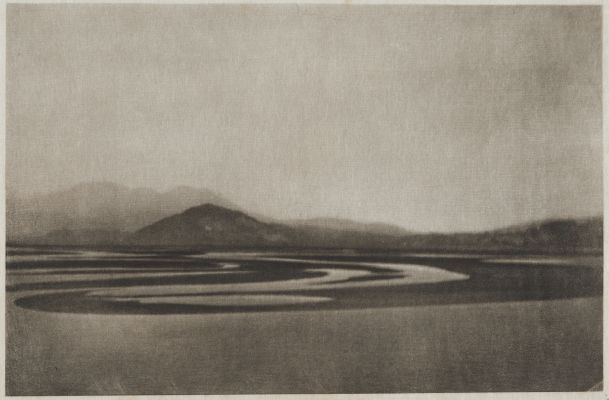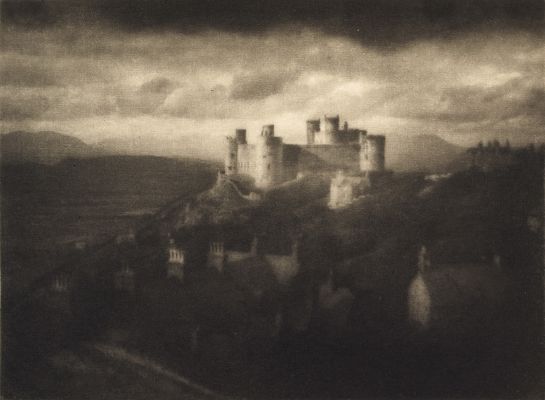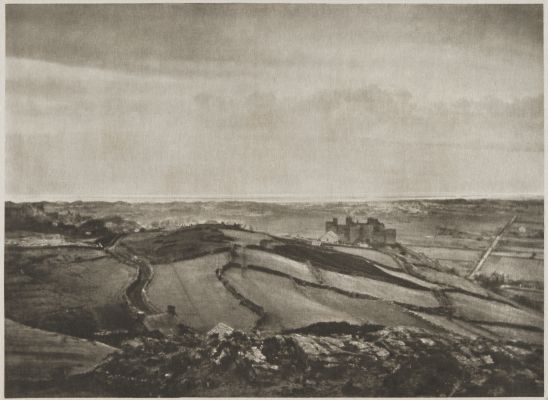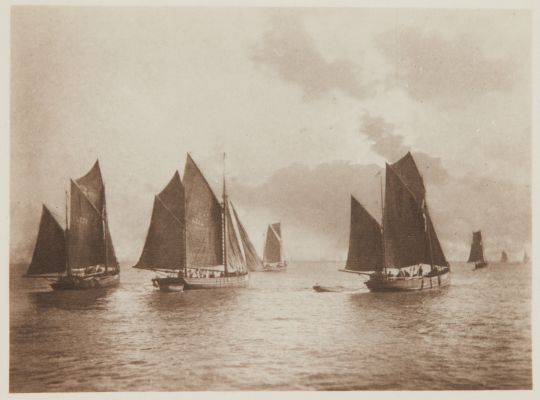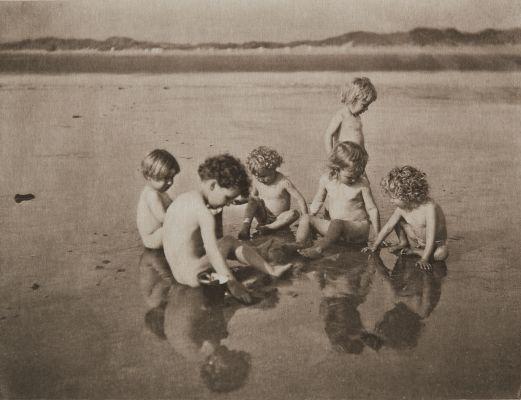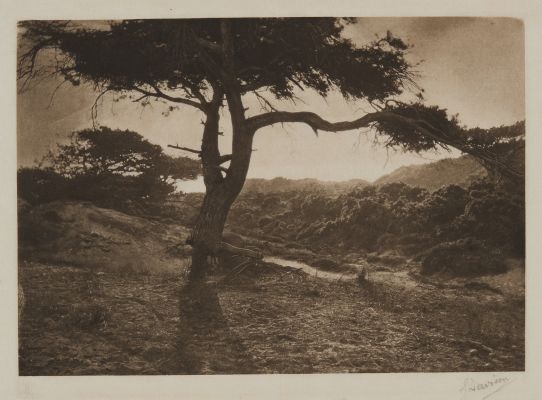
Title
Reflections, Weston-on-the-GreenArtist
Davison, George (British, 1854-1930)Date
1899Process
PhotogravureAtelier
James Craig AnnanImage Size
17.7 x 24.7 cm
This photogravure was exhibited at the Paris Salon exhibition of 1899. [1]
George Davison (1854–1930) was one of the founding members of the Linked Ring Brotherhood, managing director of Kodak Ltd in Britain and one of the leading pictorialist photographers in the UK. In 1891 he exhibited at the first major international exhibition of artistic photography, the Ausstellung Kunstlerischer Photographien, in Vienna, and his work was published by Alfred Stieglitz in the American journals Camera Notes (1902) and Camera Work (1907 and 1909). A Christian Socialist he believed in social reform and held political views that were then considered extreme, eventually forcing his resignation from Kodak and playing a role in his move from London to Harlech in North Wales at the turn of the century where he bought an estate, Plas Amhurst, and commissioned another member of the Linked Ring, George Walton, to design plans for a mansion house. By 1908 the house, named Wern Fawr, was complete and there Davison played host to artists, as well as using it for charitable causes. He was forced to leave for the French Riviera in 1925 due to ill health.
Davison had defended Emerson’s Naturalistic Photography against H.P. Robinson’s critical reviews in 1889, but only a year later Emerson and Davison become bitter enemies, after Davison’s lecture to the Royal Society of Arts in which he described his new technique of naturalistic photography whereby the entire image was in soft focus. Although his ideas were quite new, Emerson regarded him as a plagiarist and he expressed his fury in The Death of Naturalistic Photography, which was reprinted in the British Journal of Photography in January 1891. Later, in his article ‘Bubbles’ in Photograms of the Year for 1900, Emerson tried another approach and criticized ‘A Pond at Weston Green’, urging the ‘producer of that abominable daub’ to ‘renounce false gods and return to the style of his saner days’.
Alvin Langdon Coburn was a close friend of Davison and having visited Davison in Harlech frequently since 1916, he also decided to move to Harlech and built Cae Besi to designs by the Arts and Crafts architect Griffith Morris. His views of the coast, castle and town provide an interesting comparison alongside Davison’s views, taken only a few years apart. Davison’s photogravures for Camera Work were printed by the master gravure printer, James Craig Annan. It is quite possible that Annan also printed the individual gravures Davison produced; the modest window mounts are similar to those used by Annan for his own work. It is rare to find examples of Davison’s signed gravures on the market – only around 30 of his gravures in total appear in auction records since 1980, the majority of which are unsigned plates from the Stieglitz journals. [2]
Between Davison’s relationships with Emerson, Annan, Coburn and Stieglitz, it is no wonder he was an avid promoter of photogravure for his own works.
Reproduced / Exhibited
Roberts, Pam. Photohistorica: Landmarks in Photography : Rare Images from the Collection of the Royal Photographic Society. New York: Artisan, 2000. p. 291
Dawm, Patrick, Francis Ribemont, and Philip Prodger. Impressionist Camera: Pictorial Photography in Europe, 1888-1918. London: Merrell Holberton, 2006. fig. 48
Harker, Margaret F. The Linked Ring: The Secession Movement in Photography in Britain, 1892-1910. London: Heinemann, 1979. pl 7.20
Emerson, P H, Neil McWilliam, and Veronica Sekules. P.h. Emerson: Life and Landscape: Art & Photography in East Anglia 1885-1900. Norwich: Sainsbury Centre for Visual Arts, 1986. Cat. 58. p. 70.
References
[1] National Media Museum/Royal Photographic Society.
[2] Pioneers to Pictorialists, British Photography 1841-1929 Bernard Quaritch Caltalogue 1341
Weaver, Mike. British Photography in the Nineteenth Century: The Fine Art Tradition. Cambridge: Cambridge University Press, 1989
Emerson, P H, Neil McWilliam, and Veronica Sekules. P.h. Emerson: Life and Landscape: Art & Photography in East Anglia 1885-1900. Norwich: Sainsbury Centre for Visual Arts, 1986. p. 70


